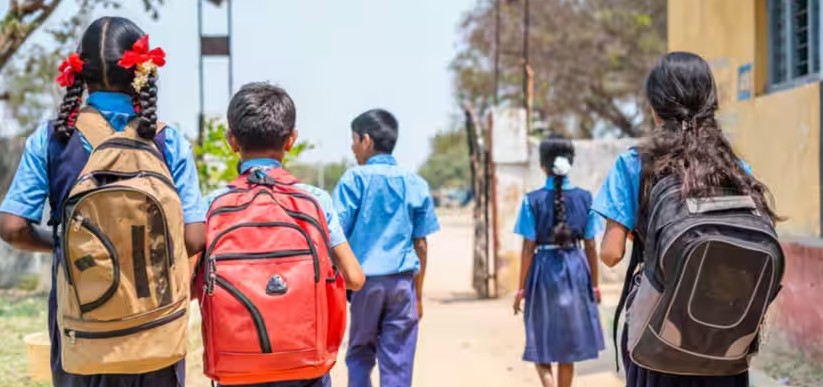Vast stretches of Punjab are currently grappling with an alarming surge in mercury, as temperatures continue their relentless climb, ushering in an intense and unsparing heatwave. This formidable meteorological phenomenon has prompted a widespread outcry from the state’s teaching community, who are vociferously advocating for a crucial adjustment to school timings: a shift to earlier hours to mitigate the severe health risks posed to students by the escalating heat. This demand reflects a deep-seated concern for the well-being of the young populace, highlighting the direct impact of environmental conditions on the academic environment and the need for adaptive policies to safeguard children from the harsh realities of extreme weather.
The sweltering heat, which has gripped Ludhiana and other parts of Punjab, is not merely an inconvenience; it represents a significant public health challenge, particularly for vulnerable groups like schoolchildren. As the sun ascends each day, its rays intensify, transforming school premises, especially those with inadequate ventilation or limited green cover, into potential health hazards. Children, with their less developed thermoregulatory systems, are particularly susceptible to heat-related illnesses, ranging from dehydration and heat exhaustion to the more severe and potentially life-threatening heatstroke.
Prolonged exposure to high temperatures can lead to symptoms such as dizziness, nausea, fatigue, headaches, and in severe cases, loss of consciousness and organ damage. The journey to and from school, often undertaken on foot, bicycle, or in crowded public transport without air conditioning, further exacerbates their exposure to the scorching heat, making them vulnerable even before they reach the classroom.
For teachers, who witness firsthand the impact of the rising mercury on their students, the urgency of the situation is palpable. They observe children arriving at school visibly fatigued, drowsy, and struggling to concentrate in classrooms that often become stifling hot by mid-morning. The oppressive heat not only compromises their physical well-being but also severely impedes their cognitive functions and ability to learn effectively.

A classroom environment that is uncomfortably hot transforms into a less conducive space for teaching and absorption of knowledge, diminishing the overall educational experience. It is this direct observation of student discomfort and the potential for serious health repercussions that has driven the teaching fraternity to unite in their demand for a strategic adjustment to school hours.
The core of the teachers’ demand is a shift to earlier school hours, typically proposing a schedule that would see classes commence and conclude earlier in the day, thereby allowing students to commute and attend school during the relatively cooler parts of the morning. For instance, moving the school day from a conventional 8:00 AM to 2:00 PM schedule to, say, a 7:00 AM to 1:00 PM timeframe, or even earlier depending on the severity of the heat, would ensure that students are indoors and ideally in cooler environments before the mercury peaks in the afternoon. This seemingly simple adjustment holds the potential to significantly reduce their exposure to the most intense heat of the day, safeguarding them during their commutes and while they are actively engaged in learning within school premises.
Beyond merely shifting timings, the teachers’ advocacy also implicitly calls for a broader re-evaluation of school infrastructure and heat mitigation strategies. Many public schools in Punjab, particularly in rural areas, lack essential facilities such as air conditioning or even sufficient fans in all classrooms. Potable cold water facilities are often inadequate, and playgrounds, lacking shade, can become scorching surfaces by noon. The current situation thus highlights the need for long-term solutions that address the physical environment of schools, ensuring they are equipped to handle extreme weather conditions, which are becoming increasingly frequent due to climate change. This includes investing in better ventilation systems, ensuring access to ample drinking water, and promoting green initiatives within school compounds to provide natural shade.
The appeals from various teacher associations and individual educators have been directed towards the state’s education department and the Chief Minister’s office. They are urging swift action, emphasizing that any delay could place thousands of children at avoidable risk. The argument put forth is not just about comfort but about the fundamental right to a safe learning environment. Educators stress that while the academic calendar is sacrosanct, the health and safety of students must take precedence above all else. They often cite examples of past instances where delayed decisions on school timings during heatwaves led to widespread illness among children, underscoring the imperative for proactive, rather than reactive, policy-making.
The government, while acknowledging the severity of the heatwave, faces a complex decision-making process. Any change in school timings has ripple effects across various aspects of daily life. It impacts parents’ work schedules, transport arrangements, and the broader rhythm of the community. Therefore, authorities must weigh the immediate health risks against the logistical challenges and socio-economic implications of such a widespread change. However, the consistent and unified voice of the teaching community provides a compelling argument for immediate consideration, putting immense pressure on the administration to prioritize student welfare.
In conclusion, the relentless ascent of mercury across Punjab has brought to the forefront a critical public health and educational challenge. The impassioned plea from the state’s teachers for an immediate shift to earlier school hours is a direct response to the tangible threat posed by the extreme heat to the well-being and academic performance of countless students. This demand is more than a mere request for convenience; it is a vital call for adaptive governance, emphasizing the paramount importance of safeguarding children from environmental hazards. As temperatures continue to soar, the decision on school timings remains a litmus test for the state’s commitment to prioritizing the health and safety of its youngest and most vulnerable citizens amidst the escalating challenges of a warming climate.


